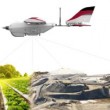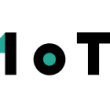

783 million people worldwide – equivalent to one in nine people, still don’t have access to clean water. Water systems are continuously installed but 65% break within the first two years as there is no sustainable method of maintaining them. (more…)
April 10, 2017
Posted by: Avadhoot Patil

I’m an “IoT guy,” and have been around since what we call IoT today was mostly wired and called SCADA or Factory Automation. Then came cellular, the cloud, and machine-to-machine (M2M). (more…)
April 4, 2017
Posted by: Avadhoot Patil

Robust wireless connectivity, security, and associated expertise is critical to the development of any successful commercial production IoT system. NXP Semiconductors N.V. is announcing the Modular IoT Framework that offers professional development teams a head start in building innovative and secure IoT applications. (more…)
March 16, 2017
Posted by: Avadhoot Patil

Sierra Wireless, a provider of fully integrated device-to-cloud solutions for the Internet of Things (IoT),has announced that PrecisionHawk has selected Sierra Wireless AirPrime® MC Series embedded modules to enable global LTE connectivity for its Low Altitude Traffic and Airspace Safety (LATAS) platform. (more…)
March 14, 2017
Posted by: Avadhoot Patil

1oT announces the launch of its global self-service based platform called 1oT Terminal at Mobile World Congress (MWC) in Barcelona, held on 27th Feb – 2nd Mar 2017. (more…)
February 28, 2017
Posted by: Avadhoot Patil

Alexander Bufalino joined KORE in October 2016 as senior vice president of international sales and marketing. Here, he tells IoT Now that, following the acquisition of Wyless, the company is addressing customers’ needs for global services and preparing to widen its offering to include software and services in addition to connectivity. (more…)
February 27, 2017
Posted by: IoT global network

Today’s world of digital convergence includes not just the merging of information and communications technology into ICT; the Internet of Things (IoT) is of course also part of the mix. (more…)
January 31, 2017
Posted by: Avadhoot Patil

New embedded SIM (Subscriber Identity Module) technology could play a major role in accelerating the development and adoption of Internet of Things (IoT) applications in the energy sector such as smart metering, demand response, (more…)
January 23, 2017
Posted by: Avadhoot Patil

Dermot O’Shea, joint CEO of antenna specialists Taoglas, is optimistic about several key aspects of the Internet of Things (IoT) in the year ahead. (more…)
January 4, 2017
Posted by: Avadhoot Patil

2016 has been a busy year for telecoms operators in the Internet of Things (IoT) market, most notably in low-power, wide-area (LPWA) technologies as narrowband IoT (NB-IoT) and LTE-M (long-term evolution to 4G, machine to machine) approach full commercial deployment. (more…)
December 28, 2016
Posted by: Avadhoot Patil